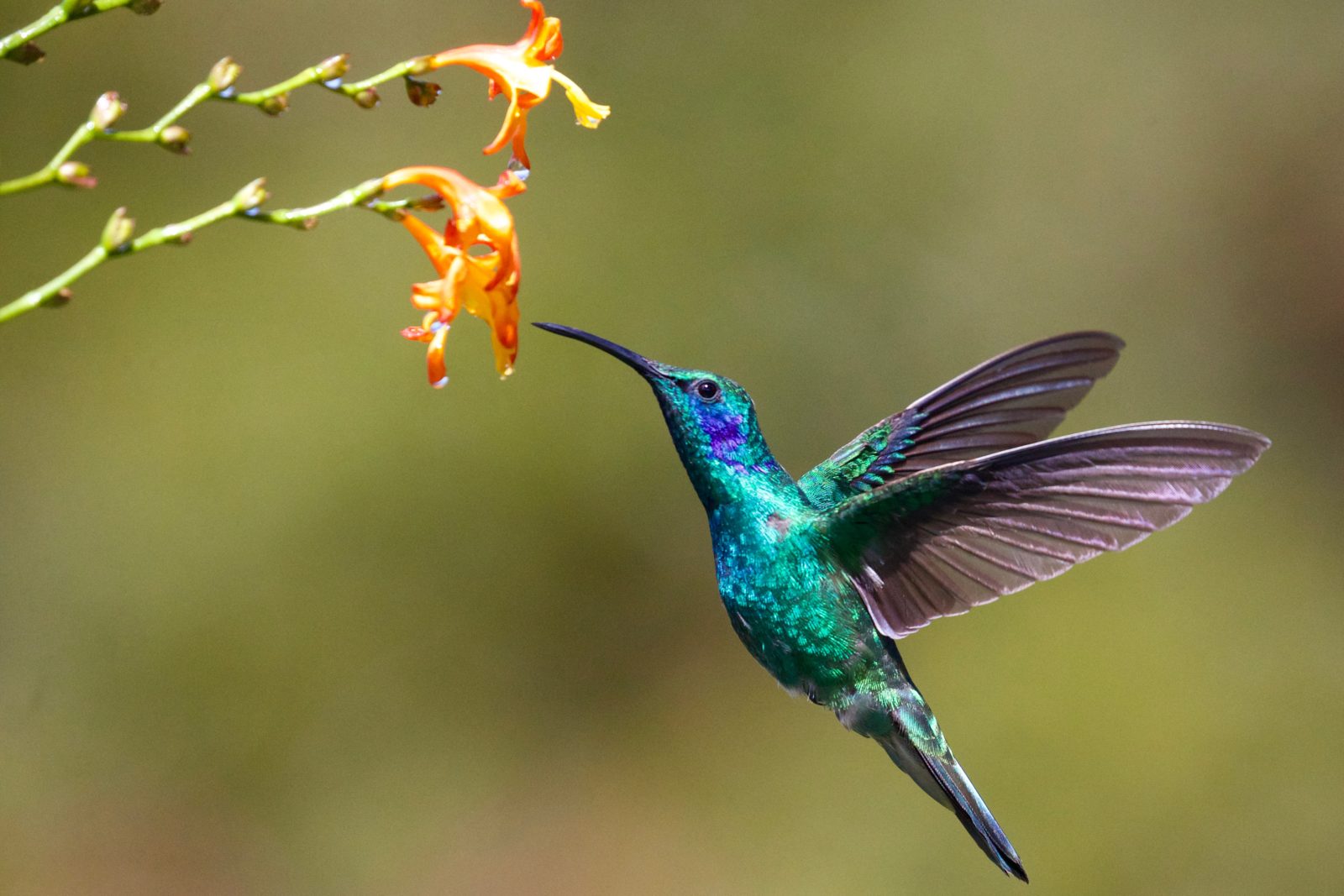Among the memorable experiences of exploring Costa Rica are encounters with birds that possess stunning colors and a repertoire of the most beautiful, and sometimes bizarre, sounds in the world.
This tiny country (the size of West Virginia) has 922 species of birds! If you consider that all of North America has 914 species (Canada, U.S.A., and Mexico), you are clearly overwhelmed by the abundance of wildlife.
While most blogs and guides will put on the spotlight of the “usual” famous birds of Costa Rica such as Hummingbirds, Quetzales, Toucans and the stunning Scarlet Macaw, we want to give justice to some of the less famous (but no less spectacular!) birds you can watch or hear while on vacation here at the beach.
1 Bare-Throated Tiger Heron
It is a large, elegantly marked heron that can be found here in Guanacaste in wetlands such as streams or mangrove lagoons. Prey includes small fish, frogs, and crayfish. Although usually silent, tiger-herons may squawk loudly when flushed, and the males are known for a loud, booming roar at dusk or at night during the breeding season.
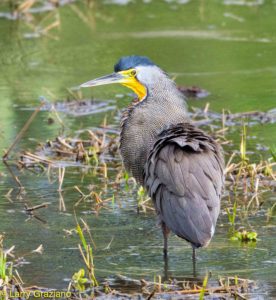
2 Blue-Gray Tanager
It’s a common bird that can be found in the lowlands to middle elevations, and it has adapted well to both dry and humid forests. They can be easily spotted in urban settings, parks, and gardens. They are often seen in pairs, feasting of fruit trees. You won’t spot them in one place for too long though, as there are a restless species. It’s likely that you’ll spot one during your stay, so be sure to bring your camera!
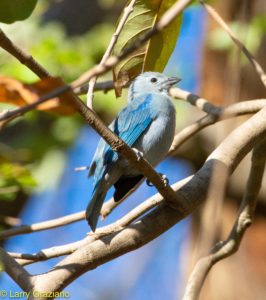
3 White-Throated Jay
It’s one of the largest and most conspicuous songbirds in Guanacaste. These omnivorous social birds are intelligent and, let me say, not shy! They are often seen in family groups and are quite attractive. You’ll probably have a chance to observe them while they loudly argue among each other on a tree or they try to steal food from the table of a restaurant or bar. Even the most organized criminal gang can’t do better!
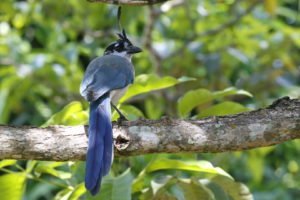
4 Northern Jacana
One of the most common and interesting waterbirds of Costa Rica. Young jacanas are colored so differently that they look like a different species. The most unusual feature is that the females are polyandrous; they defend their territory and support one to four males. They also defend the males as they incubate the eggs, and each male raises the young that hatch.
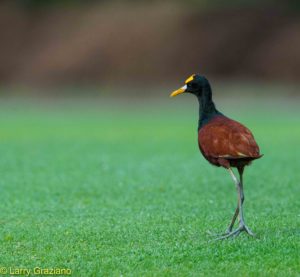
5 Orange-Fronted Parakeet
It’s a common bird of the dry forest; they eat fruits and sleep in communal roosts that may contain hundreds of individuals. They are often seen along the roads, no worries, if you don’t see them you’ll hear them for sure!
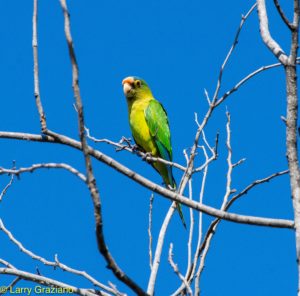
6 Tri-Colored Heron
It’s one of the largest of Costa Rica’s herons and egrets. They are present from October through April at ponds, canals, and estuaries, stalking shallow water for fish, small vertebrates and aquatic invertebrates.
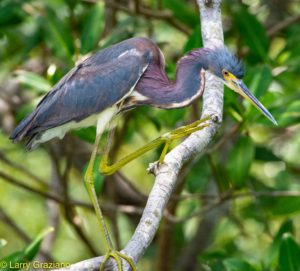
7 Tropical Kingbird
It’s one of the most common birds in Costa Rica. Its bright yellow breast and tendency to sit on prominent perches in open areas make it easy to observe. It has adapted well to cities, farms, and backyards. Wherever you stay in Costa Rica, there will probably be a Tropical Kingbird nearby!
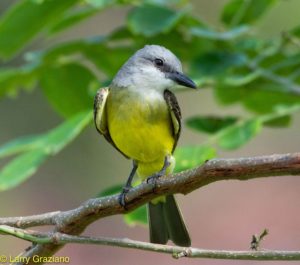
8 Turquoise-Browed Motmot
It inhabits Guanacaste dry forests, pays attention to the trees near the forest floor, about 13 feet from the ground. The most recognizable feature is their “racket” tails that it’s believed it’s used as a lure. Another strange aspect is that they nest in the ground, digging little caves in the side of hills. The Motmot is one of the most common birds you can spot and are proof that common birds are not necessarily common-looking!
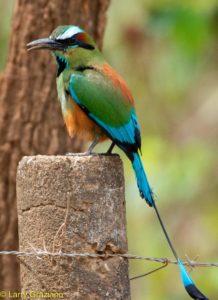
9 White-fronted Parrot
This species is Mexican origin and reached the southern limit of its range in the tropical dry forests of northwestern Costa Rica. It roots at night in communal flocks that disperse into small groups during the day. Like most other parrots and parakeets, they nest during the dry season from December through March. Expect to see them for sure flying in the sky while you sip your Margarita at the beach.
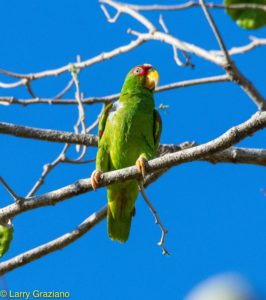
10 Wood Stork
It’s the second tallest bird in Costa Rica. Although similar to an Egret, it is more closely related to vultures. Prey includes many animals, even snakes, and hatchling caimans! It’s very abundant in the Guanacaste region.
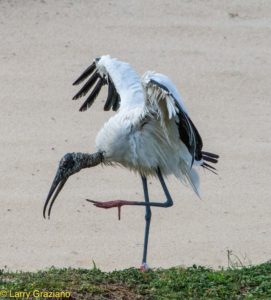
Check out our Chamber of Commerce website to find out more about our everyday life here at the tropics!

